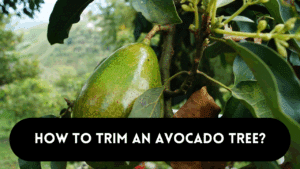A dead tree standing tall in your yard can be more than just an eyesore; it can also pose substantial safety issues and have a detrimental influence on the overall beauty of your property. Whether a tree has died due to disease, pests, or old age, it must be dealt with carefully. In this detailed tutorial, we will look at the different alternatives and procedures you can take if you have a dead tree in your yard. From safe removal techniques to creative ways to repurpose its wood, we have you covered.
What you can Do with a Dead Tree in Your Yard?
1. Assess the Tree’s Health
Before taking any action, it’s critical to analyze the tree’s condition completely. Check to make sure it’s truly dead, as certain trees may appear lifeless but could perhaps resurrect. Consider the following critical indicators:
- Branches with no leaves or needles during the growth season
- Brittle or peeling bark is a common indicator of a dying tree.
- Fungi growth on the trunk or base indicates interior decay.
- Hollowed or decayed wood might jeopardize a tree’s structural stability.
2. Seek the advice of an arborist
If you’re unsure about the tree’s condition or the best course of action, consult with a qualified arborist. These tree experts may do a professional evaluation and propose the best course of action, whether it be removal, potential treatment, or ongoing monitoring.
3. Tree Elimination
When you’ve determined that the tree is actually dead and that it creates a safety danger or damages your property, it’s time to think about removing it. You have various choices:
- DIY Removal: For smaller, more manageable trees, consider self-removal, armed with the necessary tools and safety precautions. However, due to the inherent dangers, this must be approached with caution.
- Professional Assistance: Enlisting the assistance of professional tree removal professionals is a wise plan of action in circumstances involving larger trees or complications. These specialists have the appropriate skills, equipment, and insurance coverage to complete the task safely and efficiently.
- Stump Removal: After the tree is down, you may choose to remove the stump as well. Stump removal services can grind down the stump, removing it from your yard and making it safe.
4. Maintain it as a wildlife habitat.
A standing deceased tree, often referred to as a “snag,” can fulfill an essential ecological role by serving as an invaluable habitat for wildlife. Birds, insects, and even mammals may utilize it for shelter, nesting, or foraging. Should the tree not present a safety hazard, consider leaving it in place to contribute to the biodiversity of your yard.
5. Plant a Replacement
To maintain the natural beauty of your landscape and uphold ecological balance, consider planting a new tree to replace the one you’ve removed. Select a tree species well-suited to your local climate and yard dimensions, and ensure it receives proper care and attention to avert future challenges.
6. Routine Inspections
Establish a routine of regular tree inspections, ideally carried out by a licensed arborist, to avoid a repeat of this situation. These inspections will help detect potential issues in their early stages, enabling timely and appropriate interventions to preserve the vitality of your trees.
Recycle the Wood
1. Firewood:
If the wood from your dead tree is still in good condition and not too rotted, it can be an excellent supply of fuel. During the colder months, firewood provides a sustainable and cost-effective option to heat your home. Here’s how to efficiently recycle the wood as firewood:
Cut and Split:
Using a chainsaw, cut the tree trunk and branches into manageable lengths of 16 to 18 inches. Divide the larger parts into smaller ones for easier handling.
Season the wood:
Freshly cut wood has a high moisture content, making it ineffective as firewood. To avoid this, store the wood in a dry, well-ventilated room for at least six months to a year. Seasoning permits the wood to dry out and reach an appropriate moisture level for efficient burning.
2. Mulch Material:
Wood chips from a deceased tree can be recycled as mulch, which has a variety of benefits for your garden and landscape.
Weed Control:
Spread wood chips around your garden beds and around the bases of other trees and bushes. Mulch works as a natural weed barrier, minimizing the need for weeding on a regular basis.
Moisture retention
Mulch aids in the retention of soil moisture by minimizing evaporation. This is especially useful during dry seasons because it minimizes the need for frequent watering.
Temperature Control:
Mulch also insulates the soil, keeping it cool in the summer and warm in the winter. This helps to keep root temperatures stable and promotes healthier plant growth.
3. Creative Projects:
If you enjoy DIY projects or woodworking, the wood from the deceased tree can be a useful resource for your creative projects. Here are some suggestions for reusing wood into one-of-a-kind and practical items:
Woodworking:
Use the tree’s lumber to make unique furniture, shelving, or decorative items. The unique grain and texture of the wood can provide a rustic or organic touch to your decor.
Sculpture and Art:
Sculptors and artists frequently use reclaimed wood in their work. The unusual character of the wood can give sculptures, carvings, or wall art a one-of-a-kind quality.
Explore numerous woodworking projects, including birdhouses, planters, and outdoor chairs. These projects can be both functional and visually appealing.
Home Improvements:
Incorporate reused wood into home improvement projects. It can be used to give character to your living areas by using it as paneling, flooring, or accent walls.
FAQS
1. Can I use wood from a dead tree as firewood right away?
It’s best to season the wood before using it as fuel. Freshly cut wood has a high moisture content, which makes it less efficient for burning. Seasoning the wood by allowing it to cure for at least six months to a year will ensure improved combustion.
2. How should I store firewood?
Store seasoned firewood above the ground and in a protected area to preserve it from rain and moisture. A well-ventilated woodshed or stack allows air circulation, which prevents mold and decay.
3. Can any form of wood be used as mulch?
Mulch can be made from a variety of woods, including that of a dead tree. However, avoid using wood from trees that are harmful to plants, such as black walnut. For efficient use, the wood must be chipped or shred into mulch-sized pieces.
4. Are there any safety considerations to take while dealing with reclaimed wood for creative projects?
Yes, safety is essential while working with wood. Wear protective equipment, including gloves and safety eyewear. To reduce the risk of accidents, follow safety rules and use the appropriate tools for your individual project.
Conclusion
Dealing with a dead tree in your yard can be a chance for resourcefulness and sustainability. You can turn this problem into a gratifying endeavor by reusing the wood. Whether you use it as firewood, mulch, or for creative projects, the wood from a deceased tree may be given new life and purpose, decreasing waste and benefiting your home and garden.




